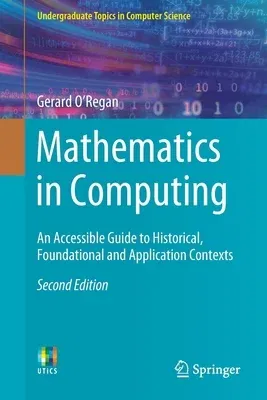From the earliest examples of computation to the digital devices that
are ubiquitous in modern society, the application of mathematics to
computing has underpinned the technology that has built our world.
This clearly written and enlightening textbook/reference provides a
concise, introductory guide to the key mathematical concepts and
techniques used by computer scientists. Spanning a wide range of
topics - from number theory to software engineering - the book
demonstrates the practical computing applications behind seemingly
abstract ideas. The work of important figures such as Alan Turing and
Robert Floyd are also discussed, highlighting how the theory has been
informed by historical developments.
Topics and features: ideal for self-study, offering many pedagogical
features such as chapter-opening key topics, chapter introductions and
summaries, review questions, and a glossary; places our current state of
knowledge within the context of the contributions made by early
civilizations, such as the ancient Babylonians, Egyptians and Greeks;
examines the building blocks of mathematics, including sets, relations
and functions; presents an introduction to logic, formal methods and
software engineering; explains the fundamentals of number theory, and
its application in cryptography; describes the basics of coding theory,
language theory, and graph theory; discusses the concept of
computability and decideability; includes concise coverage of calculus,
probability and statistics, matrices, complex numbers and quaternions.
This engaging and easy-to-understand book will appeal to students of
computer science wishing for an overview of the mathematics used in
computing, and to mathematicians curious about how their subject is
applied in the field of computer science. The book will also capture the
interest of the motivated general reader.

